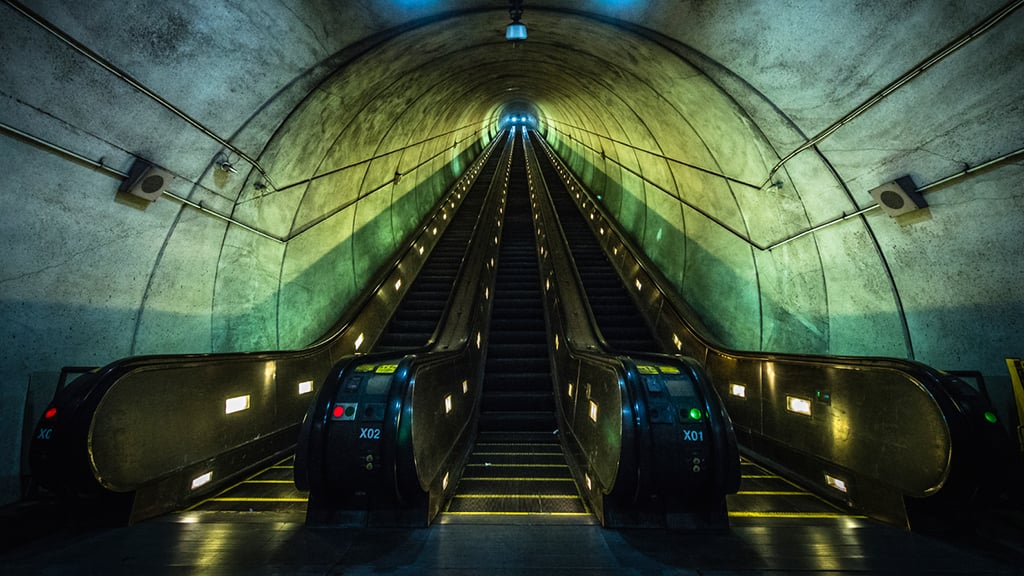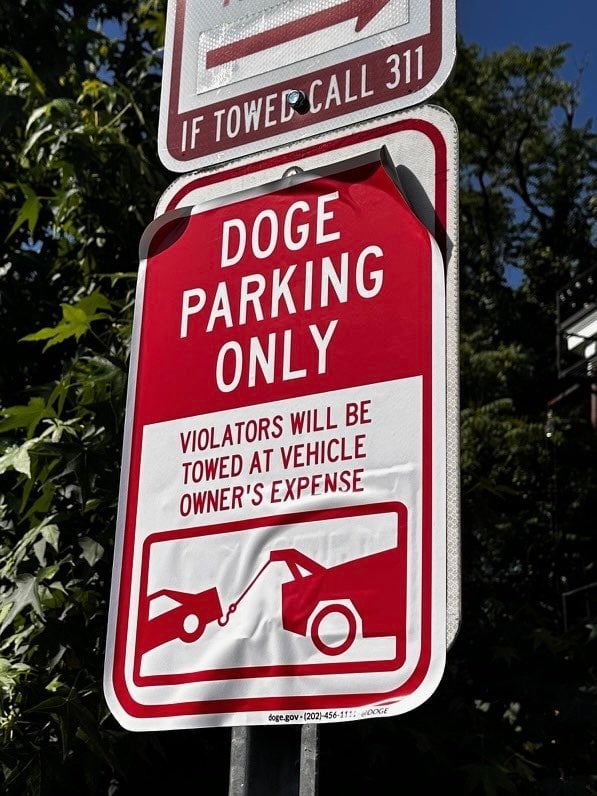When a gaggle of clueless tourists blocked Washingtonian senior editor Andrew Beaujon’s path on a Metro escalator last week, he dashed off a frustrated tweet, and Twitter’s transit critics—always ready to pounce on a WMATA controversy—reciprocated. Apparently the unwritten rule of standing on the right and walking on the left isn’t an ironclad rule, and there’s at least one transit system in the world that’s testing a new approach right now.
Could less-clogged escalators, without fewer idiots blocking the walking lane be applied to Metro?
The idea, to forbid walking on escalators at all, seems counterintuitive to the expediency at which people can enter or exit railway stations. But the London Underground is attempting exactly that.
The British people, until recently the world’s leading authority on social politesse, can be credited with the practice of standing on the right and walking on the left on moving stairways. London’s escalators were originally built with a diagonal step-off that made standing on the right seem natural. The habit showed up in a popular 1920s film, and subsequently spread from London to cities around the world, in a classic example of humans doing what everyone else is doing even if they don’t understand why.
But station managers started noticing bottlenecks on many Tube escalators. The problem: everyone on the right side standing, but too few people walking on the left, leaving as much as half the space on some escalators unused and creating bottlenecks on the platform.
So late last year, Underground officials spent three weeks telling riders in one station to stand on both sides of the escalator. It was a radical suggestion that goes against what “good Londoners have been trained to do their whole lives,” says Mark Evers, the director of customer strategy at Transport for London, the city’s transit authority.
But the trial found that escalator congestion declined by 30 percent, and the Underground is now scaling up the experiment in a six-month pilot at Holborn, one of the busiest stations in central London.
But commuter behavior doesn’t simply change by posting signs telling people not to walk, Evers acknowledges. The Underground has teamed up with behavioral scientists at the London School of Economics to figure out how to jolt Brits out of their deeply ingrained habits. They’ve tried public-address announcements and electronic messaging screens on the sides of the escalators, and sound systems playing songs like Elton John‘s “I’m Still Standing” and “Stand By Me.”
Evers admits not everyone’s been a fan of the trial. “We certainly saw that people had different views on whether or not it was the right thing to be doing,” he says. But escalator congestion seems to be decreasing at Holborn.
Could this be adapted to Metro, where locals can be militant in their expectation that people walk on the left side of escalators? Evers says the key is to look at an escalator’s height and ridership. Standing on both sides works for escalators that are very long (because no one wants to walk that far) and very busy (because that’s when the bottlenecks form). Metro has some of the longest escalators in the world, and many of those—Dupont Circle and Rosslyn, for example—are some of the system’s busiest stations. Maybe they could use a touch of London’s experimentation.
Don’t expect Metro to adopt this model. While stations like Dupont Circle and Rosslyn are stuffed at rush hours, the busiest escalators are actually at Gallery Place and Union Station, which have some of the system’s shortest escalators. And while capacity limits may be a problem in London, it’s not as often a problem for Metro.
Some escalators do reach capacity after big events, like the Smithsonian escalators on July 4, or the Navy Yard escalators before and after Nationals games. But the probability of a British-style experiment seemed low. Metro spokeswoman Morgan Dye says the transit agency has not consulted with behavioral scientists about its customers’ escalator habits.
But if we’re stuck with the unwritten stand-on-the-right/walk-on-the-left regime for good, can’t Metro put up signs telling people to stop blocking the walking lane? The answer here is also no. It’s against the American Society of Mechanical Engineers’ Safety Code for Elevators and Escalators. Simply put, people who walk on escalators are much more likely to meet some horrible accident than those who stand. Walking on the left is an unofficial custom, but Metro can’t officially encourage people to honor it. Those inert tourists are actually doing what’s recommended, whether they know it or not.



















